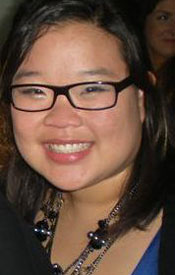Carnival of Journalism: Two vital journalism institutions working together
Notice: Only variables should be assigned by reference in /home3/elprofem/public_html/wjorg/blog/wp-content/themes/wj-theme/functions.php on line 526
Comments off
NOTE: Originally ran on Online Journalism Review: http://www.ojr.org/ojr/people/webjournalist/201101/1934/
NOTE: This is my entry – late entry – to the Carnival of Journalism, a collection of blogs writing on a single topic, organized by Spot.us creator David Cohn. This is a revival of the Carnival and in this first, returning edition, the topic is “The changing role of Universities for the information needs of a community.” I decided to approach it from my recent experience in the academic world following my time in the newsroom. You can read the round up of other entries here: carnivalofjournalism.com
Newsrooms, meet classrooms. Classrooms, meet newsrooms.
I know you’ve known each other, tolerated each other and have even talked smack about each other for decades. But guess what, you both need each other.
And you both need to change, adapt and evolve fast.
That’s my conclusion as I start my fourth semester in academia, after ten years in newsrooms. (For the record, I don’t consider myself an “academic.” I prefer the term “hackademic.” Actually, I prefer Web journalist.)
I know in newsrooms we’re busy putting out the daily miracle (every 15 minutes online) and are always short on resources. We are on the leading edge of content evolution online, but we don’t have time, money and, sometimes, the skills we need to experiment and grow. We often don’t have support from the top either.
Let’s be honest, we often dismiss academics (those who can’t, teach) and have some issues collaborating with anyone, whether be it another newsroom or a university.
I know in classrooms we put in longer hours (even though people don’t see it) working with aspiring journalists. These students are called the future of journalism on a good day, but are dismissed as clueless dreamers on a bad day – often called both by people in the newsroom.
I know that the “students” that fill our classrooms are no longer students, but journalists. And, while they are surrounded by haters (from parents to working journalists to even professors), this force of young journalists can’t be stop. Thank god.
I also know that in academia there is some time to think. We have more time to reflect and share those thoughts. We actively are talking about journalism … even though some may have not practiced it in some time. Does that mean their analysis is invalid? No… but some people do dismiss it.
Often, but not always, academia has access to grants and more funding. My jaw has dropped when I’ve heard about the amount of money funding some projects that didn’t deliver. I know in newsrooms many of us would make miracles happen with a fraction of that money.
On the other hand, when funding is given for something innovative, well, some in academia have not innovated in a while. Don’t get me wrong, I think there are more professors that are “getting it” more than leaders in the newsroom. But being innovative and risk-taking isn’t something that is always engrained in every tenured professor.
Let’s be honest again, we in academia often dismiss those in the newsroom as being arrogant and unaware that they need help. I know many of us have spent years trying to partner with local newsrooms, only to get frustrated and give up.
Both sides are imperfect. Journalism is imperfect.
Both sides need to evolve in their own way. Journalism needs to evolve through them.
Both sides need each other. Journalism needs truly them.
So, how do we do it?
A classroom, in essence, is a newsroom full of hungry journalists that don’t want to talk about journalism… they want to do it.
Professors need to empower these people to produce work, not just for their class, but for the community. These pieces should not be solely read by the person standing in front of the classroom. They need to be read by the public. And as there are cutbacks in our newsrooms, journalism classrooms need to help fill that void.
Folks in newsrooms need to join forces with the classroom. If we really want to diversify our staff, let’s take an easy step and partner up with a class that can work on a project we literally can’t afford.
Academia needs to actively offer training to local newsrooms, especially the smaller ones. Ethnic media needs your help.
Hey, editors and publishers, get training for your staff. And by reaching out to your local universities and community colleges, you’ll get it… as well as building a mutually beneficial partnership.
Every semester, a classroom is swarming on a neighborhood, a beat and story theme. While we are publishing them on our student media, others should republish them when appropriate.
Research and develop together. Universities are filled with smart people wanting to work on a good project. Newsrooms are filled with smart people who identify needs, but don’t have time to work on these great potential projects.
Yes, we are seeing these types of partnerships popping up and growing. But, quite honestly, it’s just scratching the surface.
So, what are you doing Hernandez?
Well, I’ve tried to have my class produce community journalism. This semester I hope to partner with a local news org to get their pieces published.
In terms of innovation, I’m working with a group of amazing developers that believe in the potential of joining forces for the betterment of journalism. We hope to do R&D for the industry.
We need more. And all it usually takes is a conversation and a commitment.
Imagine how much better our journalism will be if these two vital institutions worked together.
Actually, stop imagining and start doing.
